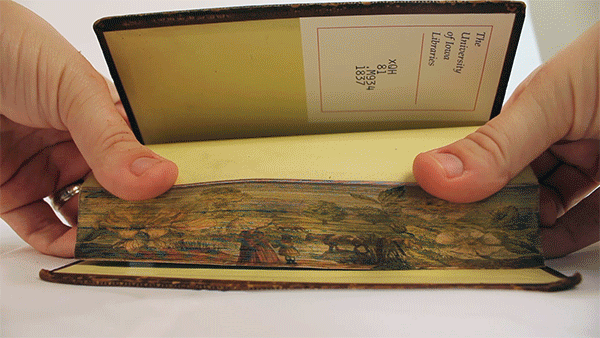
Autumn by Robert Mudie / Special Collections & University Archives at the University of Iowa

Autumn by Robert Mudie / Special Collections & University Archives at the University of Iowa

Winter by Robert Mudie / Special Collections & University Archives at the University of Iowa

Winter by Robert Mudie / Special Collections & University Archives at the University of Iowa

Spring by Robert Mudie / Special Collections & University Archives at the University of Iowa

Spring by Robert Mudie / Special Collections & University Archives at the University of Iowa

Summer by Robert Mudie / Special Collections & University Archives at the University of Iowa

Summer by Robert Mudie / Special Collections & University Archives at the University of Iowa
A few days ago Colleen Theisen who helps with outreach and instruction at the Special Collections & University Archives at the University of Iowa shared an amazing gif she made that demonstrates something called fore-edge painting on the edge of a 1837 book called Autumn by Robert Mudie. Fore-edge painting, which is believed to date back as early as the 1650s, is a way of hiding a painting on the edge of a book so that it can only be seen when the pages are fanned out. There are even books that have double fore-edge paintings, where a different image can be seen by flipping the book over and fanning the pages in the opposite direction.
When I realized the book Theisen shared was only one of a series about the seasons, I got in touch and she agreed to photograph the other three so we could share them with you here. Above are photos of Spring, Summer, Autumn and Winter which were donated to the University of Iowa by Charlotte Smith. How much fun are these? Keep an eye on the University of Iowa’s special collections Tumblr as they unearth more artificats from the archives.
Update: Because this post is getting so much attention, here are some more amazing fore-edge paintings found on YouTube.



























You must be logged in to post a comment.